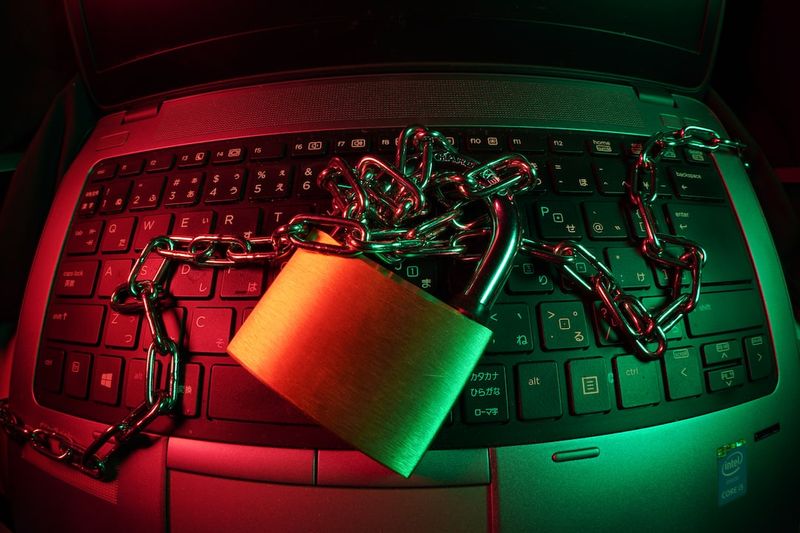The IT Professional’s Blueprint for Compliance
Introduction
In today’s digital age, where cyber threats are ever-evolving and data breaches have become alarmingly common, it is imperative for IT professionals to prioritize compliance with relevant frameworks and standards. With the growing number of regulations and best practices in the cybersecurity space, aligning with key frameworks has become a crucial aspect of ensuring online security. This report will focus on five essential frameworks that every IT professional should familiarize themselves with: HIPAA, NIST, CIS-CSC, Essential Eight, and Cyber Essentials.
Understanding the Frameworks
HIPAA (Health Insurance Portability and Accountability Act)
HIPAA primarily focuses on protecting individuals’ medical information and sets the standards for safeguarding electronic health records. IT professionals working in the healthcare industry must adhere to HIPAA regulations to ensure the privacy and security of patient data. Compliance with HIPAA includes implementing robust security measures, conducting regular risk assessments, and ensuring secure transmission and storage of data.
NIST (National Institute of Standards and Technology)
NIST provides a comprehensive framework for managing and improving cybersecurity practices across various industries. Its Cybersecurity Framework (CSF) outlines a set of guidelines and best practices to identify, protect, detect, respond to, and recover from potential cyber threats. IT professionals can use the NIST CSF as a blueprint for developing a robust cybersecurity program within their organizations.
CIS-CSC (Center for Internet Security Critical Security Controls)
The CIS-CSC is a globally recognized set of guidelines that help organizations defend against prevalent cyber threats. These controls provide a prioritized approach to implementing security measures, including configurations, vulnerability management, and ongoing monitoring. IT professionals can leverage the CIS-CSC to identify security gaps, prioritize risk mitigation efforts, and establish a strong security posture.
Essential Eight
Developed by the Australian Cyber Security Centre (ACSC), the Essential Eight is a set of mitigation strategies aimed at preventing cyber threats. These strategies focus on eight critical areas of cybersecurity, including application whitelisting, patching applications, and implementing multifactor authentication. IT professionals should incorporate the Essential Eight into their cybersecurity strategies to significantly reduce the risk of successful cyber attacks.
Cyber Essentials
Cyber Essentials, developed by the UK Government, provides a baseline standard for organizations to evaluate their cybersecurity posture. This framework helps IT professionals identify and implement essential security controls to address common cyber threats. Achieving Cyber Essentials certification can provide organizations with a competitive edge, as it demonstrates a commitment to cybersecurity best practices.
The Importance of Compliance
Compliance with these frameworks is critical for several reasons. Firstly, it helps organizations protect sensitive data from cybercriminals who are constantly evolving their techniques to breach security measures. Secondly, compliance ensures that organizations have a standardized approach to cybersecurity, reducing the chances of errors and vulnerabilities. Lastly, compliance helps maintain trust with customers, clients, and stakeholders by demonstrating a commitment to data privacy and security.
Editorial on Cybersecurity and Compliance
In recent years, multiple high-profile data breaches have exposed the vulnerabilities of organizations worldwide. The consequences of such breaches are enormous, ranging from financial losses to reputational damage. It is incumbent upon IT professionals to not only implement robust cybersecurity measures but also stay up-to-date with the latest frameworks and standards. Compliance is not just a box-ticking exercise; it is a proactive approach to minimize risks and protect valuable data.
While compliance frameworks provide a strong foundation, it is essential to remember that cybersecurity should be an ongoing process. Adapting to emerging threats, engaging in threat analysis, and implementing cutting-edge technologies are equally important. Constant vigilance and a culture of proactive cybersecurity are necessary to stay one step ahead of cybercriminals.
Advice for IT Professionals
To effectively align with these frameworks and ensure compliance, IT professionals should:
1. Stay Informed: Keep abreast of the latest developments in the cybersecurity landscape, including updates to frameworks and emerging cyber threats.
2. Conduct Regular Risk Assessments: Identify and prioritize risks to better allocate resources and implement robust security measures.
3. Collaborate with Experts: Engage with cybersecurity professionals, attend industry conferences, and participate in forums to learn from experts and share knowledge.
4. Establish Strong Security Policies: Develop and enforce comprehensive policies that outline security protocols, employee training, incident response plans, and data breach notification procedures.
5. Invest in Technology: Leverage cybersecurity tools, such as firewalls, intrusion detection systems, and encryption software, to bolster the overall security infrastructure.
6. Educate Employees: Provide regular cybersecurity training to employees to foster a culture of cybersecurity awareness and ensure everyone understands their role in protecting sensitive information.
7. Continuously Monitor and Update: Regularly monitor systems for vulnerabilities, patch software promptly, and update security configurations to keep pace with evolving cyber threats.
In conclusion, compliance with key frameworks is essential for IT professionals to navigate the complex cybersecurity landscape. By aligning with frameworks such as HIPAA, NIST, CIS-CSC, Essential Eight, and Cyber Essentials, organizations can mitigate risks, protect sensitive data, and establish themselves as leaders in information security. It is a collective responsibility to defend against cyber threats, and IT professionals play a vital role in safeguarding the digital realm.

<< photo by Markus Spiske >>
The image is for illustrative purposes only and does not depict the actual situation.
You might want to read !
- The Expanding Web of North Korean IT Scammers: U.S. DoJ’s Efforts to Combat Global Fraud
- The Future of Enterprise Security: Fingerprint Secures $33M in Funding to Drive Device Intelligence and Fraud Prevention
- Ransomware Rampage: Police Crack Down on Ragnar Locker Leak Site
- The Future of Energy: Exploring the Significant Impact of AI on the Industry
- The Global Takedown: Europol’s Decisive Blow to Ragnar Locker Ransomware Group
- Ransomware Attack on Healthcare Solutions Giant Henry Schein Causes Operational Disruption
- How Political Drama is Hindering Progress on Cyber Legislation
- D-Link Breach: Debunking the Hacker’s Claims and Examining the True Scope
- The Vulnerability Explored: Examining the Breach of Tens of Thousands of Cisco Devices
- Rising Threat: The Role of Lost and Stolen Devices in Data Breaches
- North Korean State Actors Expose Vulnerability in TeamCity Server
- The Rising Threat of Ransomware: Is Anyone Truly Too Rich to Pay?
- Cybercriminals Push Boundaries with Innovative Certificate Abuse Strategy
- Protecting Your Privacy: Safeguarding Your Data in ChatGPT
- Countering the Threat: Analyzing the Implications of a Chatbot Guide to Bio Weapons Attacks
- The Rising Threat: Unleashing the Power of Watering Hole Attacks
- The Lingering Threat: The Resurgence of Old-School Attacks in a Digital Age
- Cybersecurity Alert: North Korean Hackers Exploit TeamCity Vulnerability
- The Surge of Lazarus Group: Exploiting Defense Experts Through Trojanized VNC Apps
- Nation-State Hackers and the Exploitation Playground: Unveiling Discord’s Role in Targeting Critical Infrastructure




